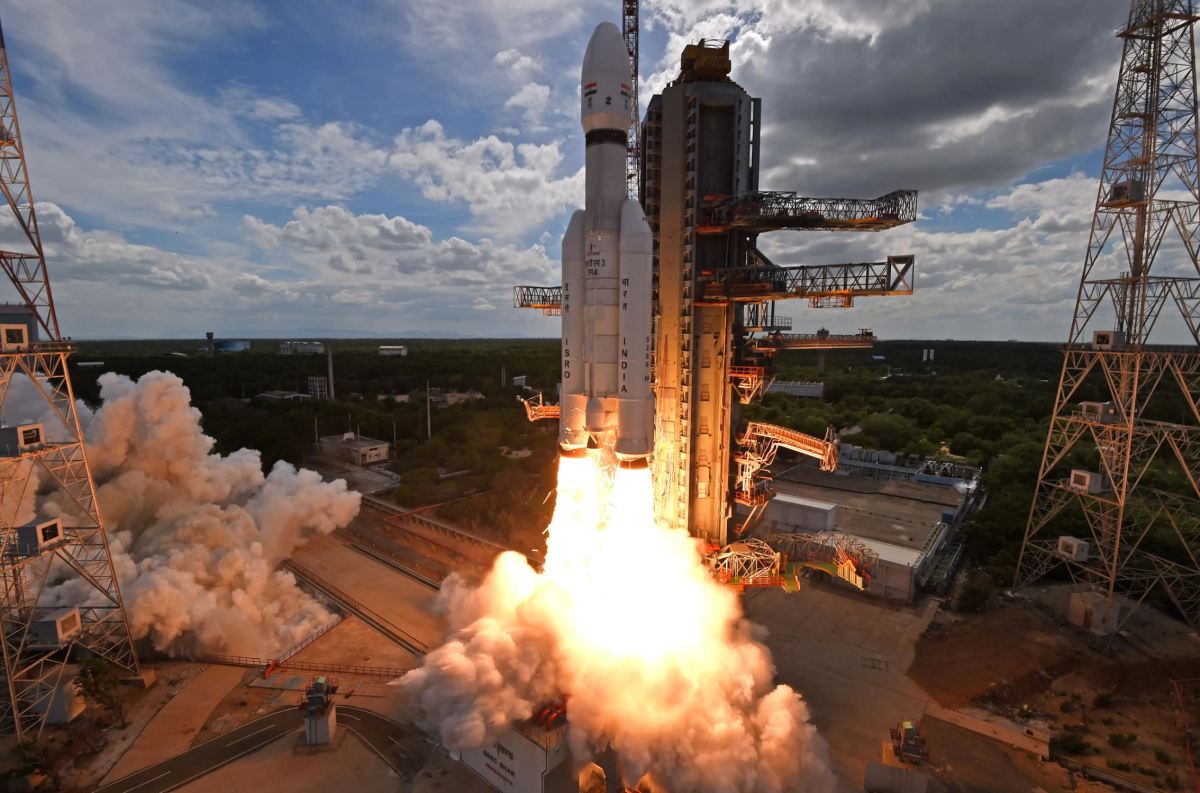HELSINKI — India is developing plans for its Chandrayaan-4 moon sample return mission that will include the country’s emerging private sector.
The Indian Space Research Organisation (ISRO) is working on plans for the moon sample return as part of its followup to last year’s successful Chandrayaan-3 lunar landing.
The multi-launch, multi-spacecraft mission would aim to land at Shiv Shakti Point, the landing site of Chandrayaan-3. The aim is to collect an unspecified mass of lunar samples and deliver them to Earth.
Nilesh Desai, Director of the Space Applications Centre (SAC), revealed the details in a presentation marking National Technology Day at SAC in Ahmedabad. “We are working on that and hopefully in the next four or five years or so. This also opens up many new technologies. The private sector also is going to be involved in a big way,” Desai said.
India has made a series of efforts to foster a private space sector, including a new national space policy introduced in 2023. Leveraging this for a flagship mission would be another such move. The country is also chasing a surge in civil and private launches in the near future.
The Chandrayaan-4 mission will be complex. Two separate launch vehicles to launch four spacecraft: A PSLV and a LVM-3. The former will send a transfer module (TM) and reentry module (RM) into a sub-geostationary transfer orbit, gradually raising to lunar distance. The latter will launch a lander module (LM) and ascender module (AM). A propulsion module will assist the latter pair.
The RM and TM will park in lunar orbit while the LM and AM descend to the moon. Operations on the lunar surface will take place within a single lunar day. A robotic arm will transfer collected samples to the AM. This will then launch into lunar orbit to rendezvous with the TM. A robotic arm aboard the TM will transfer samples to the RM before heading to Earth. The RM will then separate from the TM close to Earth for reentry and landing.
It is unclear if funding for the mission has been secured, but ISRO plans state it would launch no earlier than 2028.
As the mission profile includes lunar orbit rendezvous and docking techniques, rather than a direct return of samples to Earth, it would also have applicability for future crewed lunar missions. India Prime Minister Narendra Modi in October 2023 announced a 2040 target for putting astronauts on the moon.
ISRO Chairman S. Somanath last year gave a presentation with Chandrayaan-4 as part of a roadmap envisioning Indian astronauts on the moon and a base around 2047.
Indian Moon base in the 2040s? ISRO chairman S. Somanath gave a lecture at ISG-ISRS 2023, outlining an integrated lunar exploration roadmap with the long term plan of a lunar base around 2047. Reiterates plan announced last month for a crewed lunar landing by 2040. Ambitious. pic.twitter.com/GS4HU8BOiz— Andrew Jones (@AJ_FI) November 30, 2023
India is also working on the Lunar Polar Exploration (LuPEx) mission with Japan. That is to consist of an ISRO lander and a Japan Aerospace Exploration Agency (JAXA) rover to explore permanently shadowed craters. The mission will launch on a Japanese H3 rocket.
ISRO’s own part in the mission is again unclear in terms of budget and approval. India’s suggested launch dates appear to be later than those in Japanese statements. The mission will aim to land at exactly 90 degrees at the lunar south pole, Desai said.
Desai also touched on plans for a Mars Lander Mission (MLM), a followup to the 2013 Mars Orbiter Mission (MOM).
“Going there for nine months and then landing, that is the biggest challenge,” Desai noted. He also listed critical technologies for the mission as a supersonic parachute, aerodynamic design for landing, and a sky-crane for lander deployment. An LVM-3 would launch MLM, while a relay satellite would be launched on a PSLV.
A range of proposed science payloads for a mission rover include a ground-penetrating radar, mineral-mapping spectrometers, a raman spectrometer for seeking biosignatures, a range of cameras and an in-situ resource utilization instrument.
India’s MOM mission made it the first Asian nation to put a spacecraft in Mars orbit. Only the United States and China have successfully landed and operated rovers on Mars.
